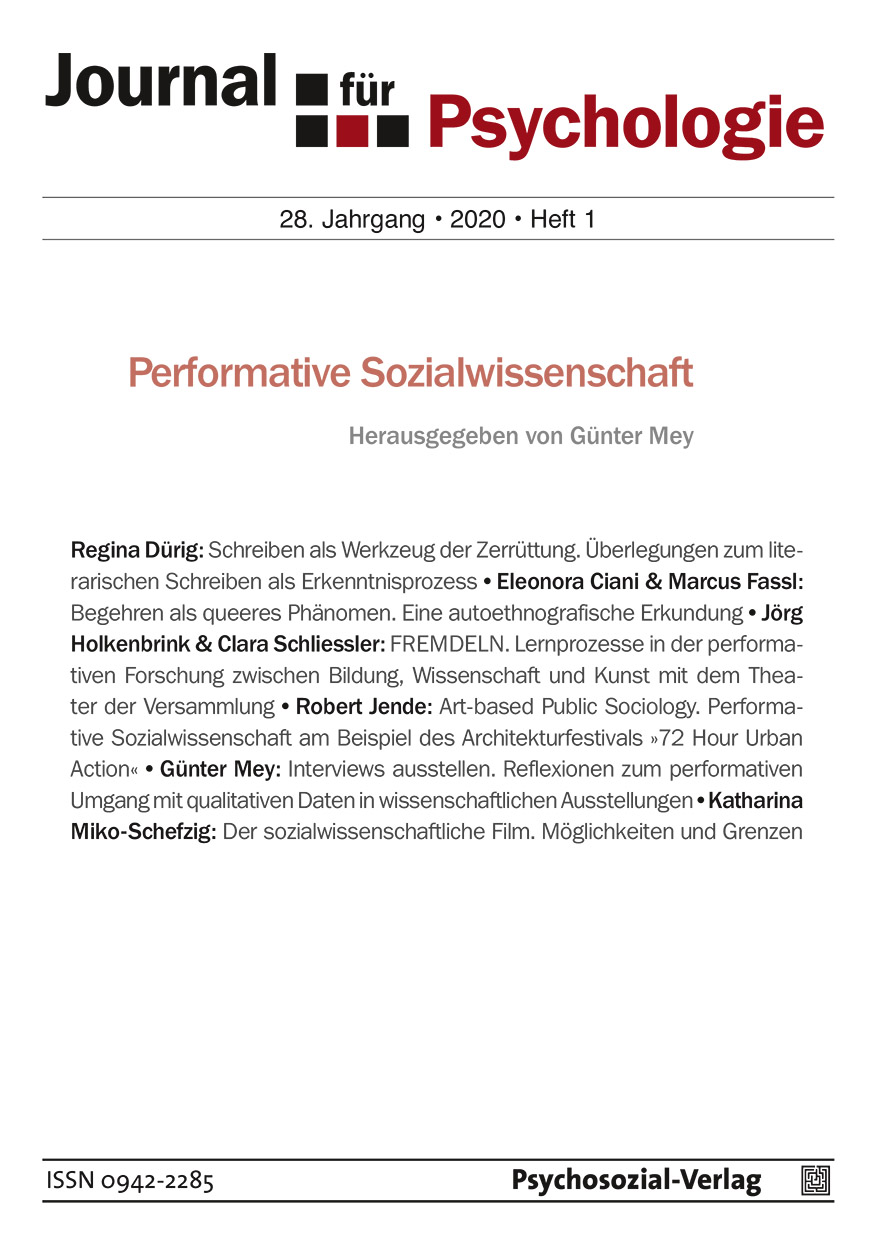Writing as a Force of Destruction
DOI:
https://doi.org/10.30820/0942-2285-2020-1-15Keywords:
creative writing, autoethnography, artistic research, practice-based research, writing as a method of inquiryAbstract
When or in which circumstances is creative writing a method of inquiry? I’m striving to answer this question from a writer’s perspective by creating a space of reflection with two theoretical texts which are important for my thinking and writing – »From Science to Literature« by Roland Barthes and »The Creative Process« by James Baldwin – and excerpts of my yet unpublished manuscript, which circles around different forms of assault (and can be read as autoethnography). What I do is, firstly, giving an overview over those aspects and arguments in the debate of artistic research which are especially relevant for creative writers and, secondly, show and elaborate on the difference between a writing with language and writing within language. I suggest, alluding to Luce Irigaray, to think of the beginning of writing as a silence, an omitted utterance, as a pure presence or potential, to allow the second word to be aware of all the concealed mechanisms which have to be questioned.Downloads
Published
2020-05-18
How to Cite
Dürig, Regina. 2020. “Writing As a Force of Destruction”. Journal für Psychologie 28 (1):15-45. https://doi.org/10.30820/0942-2285-2020-1-15.
Issue
Section
Schwerpunkt
License
This license allows private use and unmodified distribution, but prohibits editing and commercial use (further information can be found at: https://creativecommons.org/licenses/by-nc-nd/4.0/).
The terms of the Creative Commons licence only apply to the original material. The reuse of material from other sources (marked with a reference) such as charts, illustrations, photos and text extracts may require further permission for use from the respective copyrights holder.



